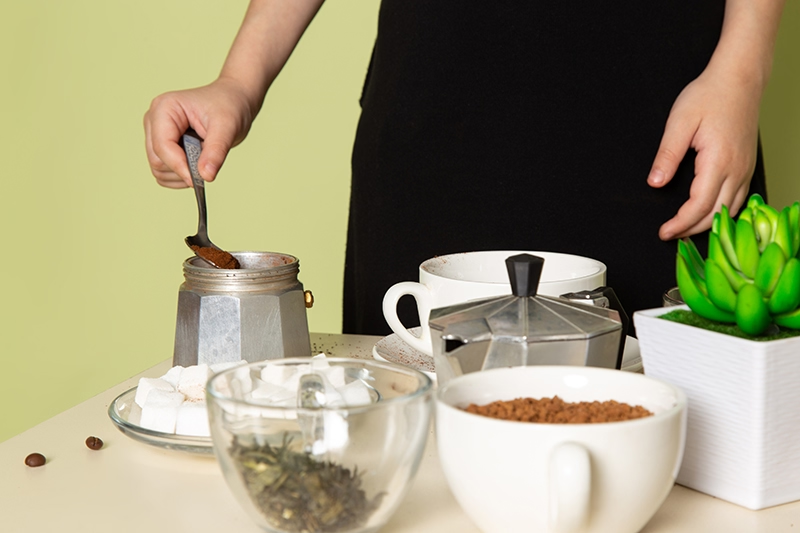Discover how to make antioxidant-rich coffee at home. Learn the best beans, brewing methods, and tips to boost health benefits in every cup.
In the quest for better health and sharper focus, coffee has emerged not just as a daily ritual, but a powerful source of antioxidants. But not all cups of coffee are created equal. The way you select, brew, and even enhance your coffee can dramatically affect its antioxidant content—and ultimately your health. If you’re here wondering how to make antioxidant-rich coffee, you’re in for an invigorating and insightful brew of science, tradition, and practical wisdom.
What Makes Coffee Antioxidant-Rich?
Antioxidants are molecules that fight free radicals, which are unstable compounds that can damage your cells and contribute to aging and diseases such as cancer and heart disease. Coffee, surprisingly, is one of the richest sources of antioxidants in the modern diet—more than green tea, blueberries, or dark chocolate. In fact, a 2010 study published in The Journal of Nutrition found that coffee contributes more antioxidants to the American diet than any other food or beverage. The reason? People drink it daily, often multiple times a day.
Coffee contains polyphenols, chlorogenic acids, melanoidins, and caffeic acid—all known to have antioxidant properties. However, these compounds are fragile and can degrade depending on the bean type, roast level, grind size, brewing method, and even water quality. Therefore, understanding what makes coffee rich in antioxidants starts with science and ends in your cup.
See more: How to Make Bulletproof Coffee: 5 Steps to More Focus
The Science Behind Coffee Antioxidants
To truly maximize antioxidant levels, we must look at the coffee’s chemical structure. Chlorogenic acids (CGA) are the most significant antioxidant compounds in coffee. They help neutralize harmful free radicals, improve cardiovascular function, support liver health, and may reduce the risk of type 2 diabetes. These compounds are highest in light and medium roasts, as prolonged roasting reduces CGA content.
However, melanoidins, which are formed during roasting, have their own unique antioxidant abilities, particularly in gut health and inflammation control. Therefore, the balance of roasting and brewing creates the antioxidant profile of your cup. Think of it as culinary chemistry meets wellness.
Polyphenols and Chlorogenic Acids Explained
Polyphenols in coffee function like microscopic bodyguards. They protect your cells from oxidative stress and are associated with reduced risks of neurodegenerative diseases, including Alzheimer’s and Parkinson’s. CGAs, in particular, exhibit strong anti-inflammatory effects, regulate blood sugar, and support fat metabolism.
According to research from Harvard Health Publishing, people who consume 3–5 cups of coffee per day may live longer and have a lower risk of cardiovascular diseases. So yes, your morning ritual could be adding years to your life—if you brew it right.
Choosing the Right Beans for Maximum Antioxidants
A great cup of antioxidant-rich coffee begins long before the first sip—it begins with the bean. Your choice of coffee bean directly influences the bioactive compounds available for your body to absorb.
Arabica vs. Robusta: Which Has More Antioxidants?
Contrary to what many assume, Robusta beans typically contain more chlorogenic acids than Arabica, sometimes up to 25% more. However, Robusta also has more caffeine and a bolder, sometimes more bitter taste. Arabica beans, on the other hand, offer smoother flavor profiles and are richer in lipids and sugars, which can impact brew quality and mouthfeel. Here’s a quick comparison:
| Type | CGA Content | Caffeine | Flavor Profile | Antioxidant Potential |
|---|---|---|---|---|
| Arabica | Moderate | Low | Mild, sweet | Moderate |
| Robusta | High | High | Strong, bitter | High |
To balance taste and health, many health-conscious consumers choose medium-roast Robusta-Arabica blends that maximize both flavor and antioxidants.
Best Organic and Light Roast Beans
Organic beans are critical if your goal is to avoid pesticides and chemicals that may interfere with antioxidant activity. Look for beans labeled USDA Organic, Fair-Trade, or Rainforest Alliance Certified. Moreover, light roast beans preserve more polyphenols and CGA than darker roasts, which are more oxidized and contain fewer beneficial compounds. An excellent example? Ethiopian or Guatemalan single-origin light roast beans, which are often praised for their high antioxidant value and complex flavor notes.
Brewing Methods That Preserve Antioxidants
Even if you choose the world’s best beans, a poor brewing method can degrade antioxidant content. Let’s break down the best brewing techniques to protect and maximize health benefits.
Cold Brew vs. Hot Brew
Cold brew has gained popularity not just for its smoothness but for its chemical stability. By using cold water and steeping coffee grounds for 12–24 hours, you preserve more delicate compounds like CGAs. Plus, cold brew is less acidic, making it easier on the stomach. But hot brew methods (like pour-over or French press) still excel in extraction efficiency, releasing more antioxidants in a shorter time if done properly.
French Press vs. Espresso
The French press preserves more of the coffee’s natural oils and polyphenols because it uses a metal mesh filter rather than paper, which traps oils. Espresso, on the other hand, uses pressure and heat to quickly extract a concentrated shot of antioxidants—if done at optimal temperature and grind size. Here’s a quick guide:
| Method | Antioxidant Retention | Notes |
|---|---|---|
| Cold Brew | High | Long steeping, low acidity |
| French Press | Moderate–High | Keeps oils, no paper filter |
| Espresso | High | Short, pressurized extraction |
| Drip Coffee | Moderate | Paper filters may trap antioxidants |
Water Temperature and Extraction Time
Brewing coffee at 90–96°C (194–205°F) is ideal. Going above or below this range risks under-extraction or degradation of antioxidants. Extraction time should also be adjusted: too short, and you miss key compounds; too long, and you extract bitterness and toxins. Grinding fresh, using filtered water, and maintaining clean equipment are also crucial steps in keeping your coffee as healthy and flavorful as possible.
Enhancing Your Coffee’s Antioxidant Power
Sometimes, the magic lies not just in the coffee itself, but in what you add to it. Certain natural add-ins can boost the antioxidant power of your brew significantly.
Add-Ins: Cinnamon, Cacao, and More
- Cinnamon: One of the most potent antioxidant-rich spices. Just a pinch can improve insulin sensitivity, reduce blood sugar, and enhance flavor.
- Raw Cacao: Rich in flavanols, cacao turns your coffee into a mocha-style immune booster.
- Turmeric + Black Pepper: Offers anti-inflammatory and detox properties when combined.
- MCT Oil or Coconut Oil: Provides healthy fats, supports brain function, and fits perfectly into a keto-friendly lifestyle.
“Let thy coffee be your pharmacy.” – a modern twist on Hippocrates
Daily Routine: When and How to Drink for Maximum Benefits
Timing is everything. When it comes to extracting the most health benefits from antioxidant-rich coffee, when you drink it can be just as important as how you make it. Your body’s response to caffeine—and the absorption of antioxidants like chlorogenic acid—is heavily influenced by your circadian rhythm, cortisol levels, and even meal timing.
Studies published in journals like Frontiers in Nutrition and The American Journal of Clinical Nutrition suggest that antioxidant absorption is heightened when coffee is consumed 30 to 60 minutes after waking, when your cortisol levels begin to normalize. This avoids a spike in stress hormones and supports better energy and focus throughout the day.
Drinking coffee with or after a meal may also help stabilize blood sugar levels, while intermittent fasters often consume black coffee in the morning to enhance fat metabolism and promote autophagy—a cellular renewal process linked to longevity. Here’s a smart routine endorsed by health professionals and elite biohackers:
- 6:30–7:30 AM: Hydrate with water first
- 8:00–9:00 AM: First antioxidant-rich coffee (black, or with MCT oil)
- 10:00–11:00 AM: Optional second cup (with cacao or cinnamon)
- Avoid after 2:00 PM: Preserve melatonin and sleep quality
“Drink coffee as if it were your medicine—not your crutch.” – Wellness Proverb
Common Myths About Antioxidant Coffee Debunked
1. Dark Roast = More Antioxidants?
This is a common misconception. While dark roasts are bolder in flavor and contain more melanoidins (Maillard reaction products), they actually have fewer chlorogenic acids—the most potent antioxidants in coffee. Light roasts typically retain the highest CGA content, although the roasting method and bean origin also play significant roles. The takeaway? It’s not about roast darkness—it’s about balance and intention.
2. Is Instant Coffee Bad?
Not necessarily. High-quality instant coffee brands like Mount Hagen or Waka Coffee now offer freeze-dried options that preserve a surprising amount of antioxidants. However, beware of added sugars, artificial creamers, and flavorings. If purity matters to you, opt for organic, single-origin instant coffees and always check the ingredient label.
3. Does Decaf Have Antioxidants?
Yes, although caffeine-free versions have slightly lower antioxidant content due to processing. Still, decaf coffee, especially those using the Swiss Water Process, retain a large portion of polyphenols and CGAs—making them a good choice for evening drinkers or those sensitive to caffeine.
Bonus Tips to Supercharge Your Coffee Ritual
Transform your coffee habit from a routine into a wellness ritual. At Lyoncafe, we’ve worked with thousands of health-focused customers and curated strategies based on science, flavor, and convenience. Here are our top expert-backed tips:
Use a Reusable Metal Filter Instead of Paper
Why? Paper filters absorb natural oils (like cafestol) which contain powerful antioxidants and beneficial diterpenes. A stainless steel mesh filter allows more phytonutrients to pass into your brew. It’s also more eco-friendly and aligns with sustainable coffee practices.
Store Beans in an Airtight, Dark Container
Oxygen, light, and moisture are the enemies of coffee freshness. Use opaque ceramic containers with rubber seals or vacuum-sealed coffee canisters to keep beans potent longer. Always buy whole beans and grind before brewing to preserve antioxidant activity.
Experiment with Mushroom Coffee
Blending Lion’s Mane, Cordyceps, or Chaga into your brew can enhance mental clarity, immune defense, and adaptogenic support. These functional fungi are trending globally and pair well with robust flavors of medium-roast coffee.
Add a Splash of Vitamin C
A squeeze of lemon? Sounds strange—but Vitamin C may enhance polyphenol absorption and neutralize acidity. Try this trick if you drink cold brew or iced coffee.
Lyoncafe’s Expertise in Antioxidant-Rich Coffee
At Lyoncafe—mtnlyoncafe.com—we’ve spent years researching and developing premium antioxidant-boosting coffee blends. Our process includes:
- Selecting high-elevation beans rich in CGAs
- Using low-temperature roasting to preserve polyphenols
- Infusing selected blends with superfoods like cacao, turmeric, and cinnamon
- Packaging in UV-resistant, nitrogen-sealed bags for freshness
As part of our commitment to your health journey, we also offer antioxidant test kits, brew guides, and wellness coaching to help you build rituals that energize both body and mind.
“Coffee isn’t just about caffeine—it’s about connection, clarity, and cellular renewal.” – Founder of Lyoncafe
Conclusion
Let’s recap. By learning how to make antioxidant-rich coffee, you unlock the potential to boost your immunity, fight inflammation, and enhance longevity—all from something you already enjoy daily. From choosing the right beans to brewing with intention and adding powerful superfoods, you now hold the keys to a health-enhancing ritual.

I’m Kara Chavez, and I love coffee. I like to create some of the best coffees around – espressos, lattes, macchiatos . I strive for perfection in my coffee-making skills, and I take great pride in providing a delicious cup of joe to my customers.
I’ve been working in the coffee industry for years now, and I know everything there is to know about making a perfect cup of coffee. My passion for coffee shines through in every cup that I make, and I hope that you’ll stop by soon so that I can share my love of coffee with you!

